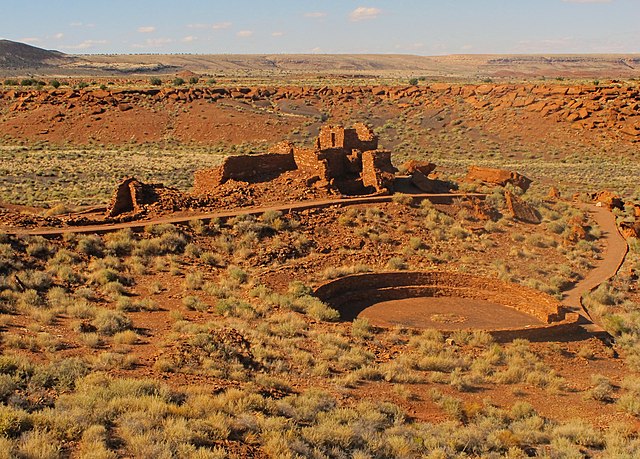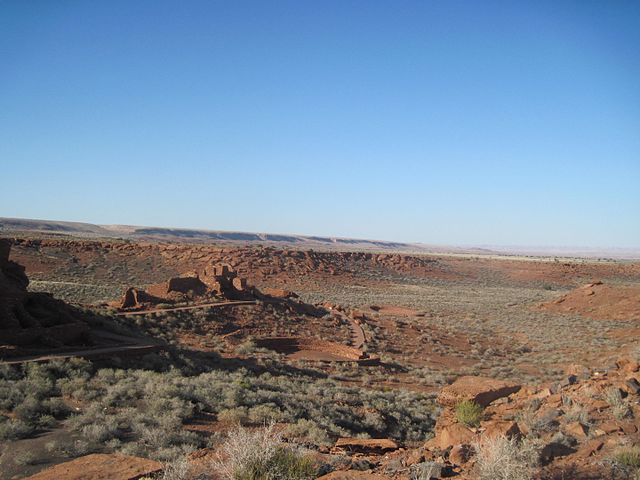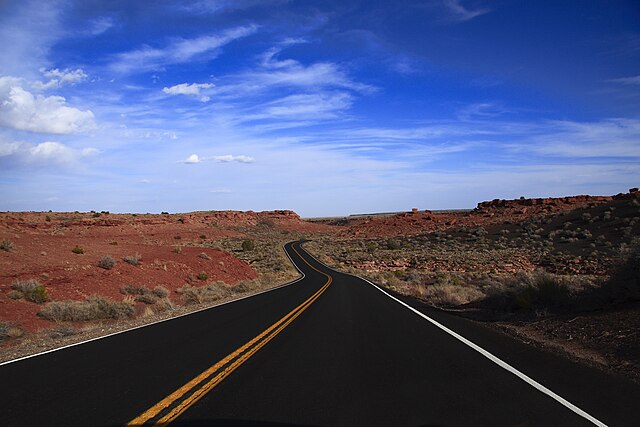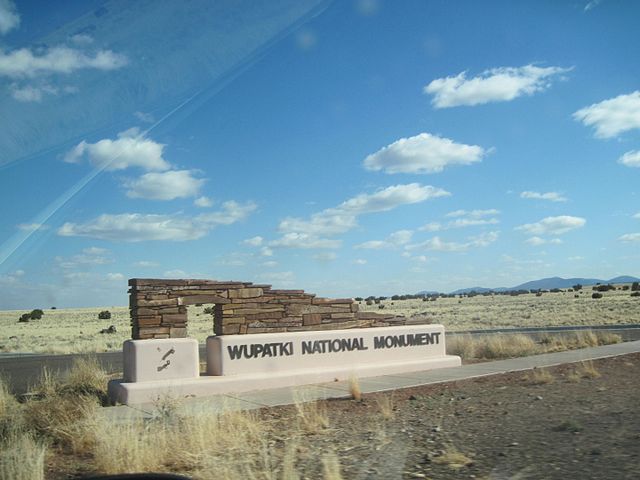Tucked away in the high desert of northern Arizona, Wupatki National Monument stands as one of America’s most fascinating archaeological treasures. This remarkable site preserves the remnants of ancient Puebloan communities that thrived here over 800 years ago, offering visitors a unique window into the lives of indigenous peoples who called this rugged landscape home.
What sets Wupatki apart from other archaeological sites isn’t just its age or preservation—it’s the story it tells. Here, red sandstone structures rise from the desert floor like ancient sentinels, each one whispering tales of adaptation, community, and survival in one of the most challenging environments imaginable. The monument protects over 2,600 archaeological sites spread across 35,000 acres, making it one of the largest concentrations of Puebloan ruins in the Southwest.
The name “Wupatki” itself comes from the Hopi word meaning “long cut house,” referring to the largest pueblo structure in the monument. But this place represents so much more than just old buildings—it’s a testament to human ingenuity, cultural exchange, and the enduring connection between people and place.
Walnut Canyon National Monument – Ancient Cliff Dwellings
The Rich History of Wupatki
Ancient Puebloan Civilizations
The story of Wupatki begins long before the impressive structures we see today were built. Archaeological evidence suggests that people have been living in this region for thousands of years, but the golden age of Wupatki occurred between 1100 and 1250 CE. During this period, the area experienced a population boom that transformed it into a thriving multicultural hub.
The people who built these remarkable structures weren’t just one group—they represented a fascinating blend of cultures. Ancestral Puebloans, Cohonina, and Sinagua peoples all contributed to the rich tapestry of life at Wupatki. This cultural mixing wasn’t just coincidental; it was the result of dramatic environmental changes that forced different groups to adapt and cooperate in ways that were unprecedented for the region.
The Sunset Crater Connection
The key to understanding Wupatki’s sudden prosperity lies about 20 miles to the southeast, where Sunset Crater Volcano dramatically altered the landscape around 1085 CE. This volcanic eruption, while initially devastating, ultimately created the conditions that made Wupatki’s golden age possible.
The volcanic ash, or cinder, that fell across the region acted like a natural mulch, helping to retain moisture in the soil and creating ideal conditions for agriculture. This volcanic gift transformed what had been marginal farmland into some of the most productive agricultural territory in the Southwest. Word of this agricultural bonanza spread quickly, attracting people from hundreds of miles away who came to take advantage of the improved growing conditions.
Life After the Eruption
The post-eruption period saw remarkable innovation and adaptation. The residents of Wupatki developed sophisticated agricultural techniques, built impressive architectural structures, and established extensive trade networks that stretched from the Pacific Coast to the Great Plains. They grew corn, beans, and squash—the famous “Three Sisters” of Southwestern agriculture—and supplemented their diet with gathered wild foods and hunted game.
But perhaps most remarkably, they created a truly multicultural society. Different groups brought their own architectural styles, pottery techniques, and cultural practices, creating a unique blend that makes Wupatki distinct from other archaeological sites in the region. This cultural fusion is evident in everything from the construction techniques used in the pueblos to the diverse styles of pottery found throughout the site.
Exploring the Major Ruins

Wupatki Pueblo: The Crown Jewel
The centerpiece of the monument is undoubtedly Wupatki Pueblo itself, a magnificent structure that once housed over 100 rooms and stood as the tallest building in the area for centuries. This impressive complex wasn’t just a residence—it was a community center, ceremonial space, and symbol of the prosperity that the volcanic soil had brought to the region.
Walking through Wupatki Pueblo today, you can still see the sophisticated engineering that went into its construction. The builders used local red sandstone, carefully selected and fitted together with mud mortar. The structure rises multiple stories in places, with rooms that served different functions—from storage spaces to living quarters to ceremonial chambers.
One of the most intriguing features of Wupatki Pueblo is its ball court, the northernmost example of this Mesoamerican architectural feature ever discovered. This circular depression, lined with stone, suggests that the residents of Wupatki participated in the ritual ball games that were central to many ancient American cultures. The presence of this feature speaks to the extensive trade and cultural connections that linked Wupatki to communities hundreds of miles away.
Wukoki Pueblo: The Towering Sentinel
About 2.5 miles from the main Wupatki site stands Wukoki Pueblo, perhaps the most photographed structure in the monument. This three-story tower rises dramatically from a sandstone outcrop, its red walls seeming to grow naturally from the rock itself. The name “Wukoki” means “big house” in Hopi, and it’s easy to see why this structure earned that designation.
Wukoki represents a different architectural tradition than the main Wupatki complex. Built directly on bedrock, it showcases the builders’ ability to work with the natural contours of the landscape. The structure’s compact design and elevated position suggest it may have served as a lookout point or defensive position, offering commanding views of the surrounding countryside.
The preservation of Wukoki is remarkable, with much of the original construction still intact. Visitors can see the careful stonework, the narrow windows that provided light while minimizing heat gain, and the ingenious use of natural rock formations as part of the structure’s foundation.
Citadel Pueblo: The Fortress on the Hill
Citadel Pueblo earns its name from its commanding position atop a small hill, where it overlooks the surrounding landscape like an ancient fortress. This site represents yet another architectural approach, with structures that cascade down the hillside in a series of terraces and levels.
The strategic location of Citadel Pueblo wasn’t accidental. From this vantage point, residents could monitor travel routes, watch for approaching weather, and communicate with other settlements through smoke signals or other means. The site also provided natural defense advantages, with steep approaches that would have made unwelcome visitors think twice about their intentions.
Archaeological evidence suggests that Citadel Pueblo was occupied for a shorter period than some of the other major sites, but during its heyday, it was home to a significant population. The variety of room sizes and types suggests a complex social organization, with spaces dedicated to different activities and possibly different social classes.
Nalakihu and Lomaki: The Twin Treasures
The sites of Nalakihu and Lomaki, located close to each other along the loop road, offer intimate glimpses into daily life at Wupatki. These smaller structures, while not as imposing as the major pueblos, provide valuable insights into the diverse architectural traditions and living arrangements of the ancient residents.
Nalakihu, whose name means “house standing alone,” is a compact structure that demonstrates the efficient use of space and materials. Despite its smaller size, it features sophisticated construction techniques and provides evidence of the skilled craftsmanship that characterized all of Wupatki’s builders.
Lomaki, meaning “beautiful house,” lives up to its name with elegant proportions and careful attention to detail. This structure showcases the aesthetic sensibilities of its builders, who clearly valued beauty alongside functionality. The site’s location on the edge of a small canyon provides dramatic views and speaks to the residents’ appreciation for the natural beauty of their surroundings.
Planning Your Visit to Wupatki
Best Times to Visit
Timing your visit to Wupatki National Monument can make a significant difference in your experience. The high desert climate means that conditions can vary dramatically throughout the year, and choosing the right time can enhance both your comfort and your enjoyment of the site.
Spring (March through May) and fall (September through November) are generally considered the best times to visit. During these seasons, temperatures are moderate, typically ranging from the 40s to 70s Fahrenheit, making hiking and exploration comfortable. The spring brings the added bonus of wildflowers, which can create stunning displays of color against the red sandstone structures.
Summer visits require more preparation due to high temperatures that can exceed 90°F, but they’re certainly possible with proper planning. Early morning visits are particularly rewarding during summer months, when the light is soft and the temperatures are still manageable. Winter visits can be magical, with the possibility of snow creating dramatic contrasts against the red rocks, though temperatures can drop below freezing.
Getting There and Transportation
Wupatki National Monument is located about 40 miles northeast of Flagstaff, Arizona, making it easily accessible for visitors to the region. The monument is reached via US Highway 89, which connects to a 36-mile loop road that provides access to all the major sites within the monument.
The loop road is well-maintained and suitable for all types of vehicles, including RVs and buses. However, it’s important to note that the road is narrow in places, and the desert environment can be challenging for vehicles that aren’t properly maintained. Make sure your vehicle is in good condition before making the trip, and always carry extra water and emergency supplies.
For those without personal transportation, several tour companies in Flagstaff offer guided trips to Wupatki, often combined with visits to nearby Sunset Crater Volcano National Monument. These tours can provide valuable historical and cultural context that enhances the visitor experience.
Entrance Fees and Passes
Wupatki National Monument charges standard National Park Service entrance fees, which help support the preservation and interpretation of this remarkable site. A seven-day pass covers admission to both Wupatki and Sunset Crater Volcano National Monuments, making it an excellent value for visitors planning to see both sites.
Annual passes are available for frequent visitors, and the America the Beautiful National Parks Pass provides access to Wupatki and hundreds of other federal recreation sites. Senior and military discounts are available, and the Every Kid Outdoors program provides free access for fourth-grade students and their families.
What to Expect During Your Visit

The Visitor Center Experience
Your journey through Wupatki should begin at the visitor center, which serves as both an introduction to the monument and a gateway to understanding the complex history of the region. The center features excellent exhibits that provide context for what you’ll see during your visit, including displays on the volcanic eruption that changed the landscape, the diverse cultures that called Wupatki home, and the archaeological work that continues to reveal new insights about the site.
The bookstore at the visitor center offers an excellent selection of books about Southwestern archaeology, Native American history, and the natural history of the region. These resources can greatly enhance your understanding of what you’re seeing and provide valuable context for your visit.
Rangers at the visitor center are knowledgeable and passionate about the site, and they’re always happy to answer questions and provide recommendations for your visit. They can help you plan your route based on your interests, physical abilities, and available time.
Self-Guided Tours and Trails
Wupatki is designed for self-guided exploration, with well-marked trails leading to each of the major sites. The trails are generally easy to moderate in difficulty, though the desert environment and elevation (around 4,900 feet) can make them more challenging than they initially appear.
The Wupatki Pueblo trail is the longest at about 0.5 miles round trip, but it’s mostly flat and well-maintained. This trail provides access to the largest and most complex structure in the monument, and interpretive signs along the way explain the significance of what you’re seeing.
The other major sites—Wukoki, Citadel, Nalakihu, and Lomaki—have shorter trails, typically ranging from 0.25 to 0.5 miles round trip. Each offers a different perspective on the lives and achievements of Wupatki’s ancient residents.
Ranger Programs and Educational Opportunities
During peak seasons, Wupatki offers ranger-led programs that can greatly enhance your visit. These programs might include guided tours of the major sites, evening programs about astronomy and the night sky, or special presentations about ongoing archaeological research.
The monument also offers educational programs for school groups and other organizations. These programs can be tailored to different age groups and educational objectives, making Wupatki an excellent destination for learning about archaeology, history, and cultural preservation.
Wildlife and Natural Features
Desert Flora and Fauna
While the archaeological sites are the main attraction at Wupatki, the monument is also home to a surprising diversity of plant and animal life. The high desert environment supports a variety of species adapted to the challenging conditions of limited water and extreme temperature variations.
Among the most common animals you might encounter are prairie dogs, whose towns dot the landscape and provide endless entertainment for visitors. These social rodents play a crucial role in the ecosystem, their burrows providing homes for other species and their activities helping to aerate the soil.
The monument is also home to a variety of birds, including ravens, hawks, and seasonal migrants. The early morning hours are particularly good for bird watching, when many species are most active. Reptiles are also common, including various lizard species that can often be seen basking on the warm sandstone.
The plant life at Wupatki is equally fascinating, with species that showcase remarkable adaptations to the desert environment. Four o’clocks, Indian paintbrush, and various cacti add splashes of color to the landscape, while juniper and pinyon pine trees provide habitat for wildlife and shelter for visitors.
Geological Wonders
The geology of Wupatki tells a story that spans millions of years, with layers of rock that reveal the region’s complex history. The red sandstone that dominates the landscape was formed from ancient sand dunes, compressed and cemented over millions of years into the beautiful formations we see today.
The relatively recent volcanic activity that created Sunset Crater also left its mark on Wupatki’s landscape. Cinder and ash from the eruption can still be seen throughout the monument, and the contrast between the black volcanic material and the red sandstone creates striking visual effects.
The geological features of Wupatki aren’t just beautiful—they were crucial to the success of the ancient communities that lived here. The sandstone provided excellent building material, while the volcanic soil created ideal growing conditions for crops. Understanding these geological relationships helps visitors appreciate the sophisticated ways in which the ancient residents adapted to and worked with their environment.
Photography and Preservation
Best Photography Spots
Wupatki offers incredible photography opportunities, with dramatic landscapes, fascinating architectural details, and ever-changing light conditions that create new scenes throughout the day. The contrast between the red sandstone structures and the often brilliant blue sky provides natural drama that’s hard to match.
Wukoki Pueblo is perhaps the most photographed structure in the monument, and for good reason. The three-story tower rising from its sandstone foundation creates a striking silhouette against the sky, particularly during the golden hours of early morning and late afternoon.
The main Wupatki Pueblo complex offers opportunities for both wide-angle shots that capture the scale of the structure and detail shots that highlight the sophisticated construction techniques. The ball court is particularly photogenic, with its circular form creating interesting geometric compositions.
For landscape photography, the views from Citadel Pueblo are hard to beat. The elevated position provides sweeping vistas of the surrounding countryside, with the San Francisco Peaks visible in the distance on clear days.
Respecting the Ruins
While photography is encouraged at Wupatki, it’s crucial that visitors understand and respect the rules designed to protect these irreplaceable archaeological resources. The structures at Wupatki are over 800 years old and are incredibly fragile. Even seemingly minor damage can have serious consequences for the long-term preservation of these sites.
Visitors are not allowed to climb on, enter, or touch the structures. This rule exists not just to protect the ruins, but also to ensure visitor safety—the ancient mortar and stone can be unstable, and falls from even low heights can cause serious injuries.
The use of drones is prohibited throughout the monument, both to protect the archaeological resources and to preserve the experience for other visitors. Traditional photography from designated areas provides excellent opportunities to capture the beauty and significance of the sites without compromising their integrity.
Nearby Attractions and Extended Adventures

Sunset Crater Volcano National Monument
No visit to Wupatki would be complete without also exploring Sunset Crater Volcano National Monument, located just 20 miles away and connected by the same loop road. This site preserves the volcano whose eruption created the conditions that made Wupatki’s golden age possible.
The contrast between the two monuments is striking—where Wupatki showcases human adaptation and achievement, Sunset Crater demonstrates the raw power of geological forces. The cinder cone rises dramatically from the landscape, its red and orange colors explaining the “sunset” part of its name.
The Lava Flow Trail at Sunset Crater provides an excellent introduction to the volcanic landscape, while the more challenging Lenox Crater Trail offers panoramic views of the region. Together, Wupatki and Sunset Crater tell a complete story of how geological events shaped human history in the Southwest.
Flagstaff and Northern Arizona
Wupatki’s location makes it an excellent base for exploring the broader region of northern Arizona. Flagstaff, the nearest city, offers excellent restaurants, accommodations, and cultural attractions, including the Museum of Northern Arizona, which provides additional context for understanding the region’s rich archaeological heritage.
The Grand Canyon is about 80 miles north of Wupatki, making it possible to combine a visit to the monument with one of America’s most famous natural wonders. Other nearby attractions include Walnut Canyon National Monument, with its cliff dwellings, and the historic Route 66, which passes through Flagstaff.
For those interested in extending their archaeological adventure, the Four Corners region offers numerous other sites, including Mesa Verde National Park, Canyon de Chelly National Monument, and dozens of smaller sites that showcase the rich cultural heritage of the Southwest.
Practical Tips for Your Wupatki Adventure
What to Bring
The desert environment at Wupatki requires some preparation to ensure a safe and comfortable visit. Water is absolutely essential—the dry air and high elevation can lead to dehydration much more quickly than you might expect. Plan to bring at least one gallon of water per person for a full day visit, and more during summer months.
Sun protection is crucial year-round at Wupatki. The combination of high elevation and desert conditions means that UV exposure is intense, even during cooler months. Sunscreen, hats, and sunglasses are essential, and light-colored, long-sleeved clothing can provide additional protection while helping to keep you cool.
Comfortable walking shoes are important, as the trails can be rocky and uneven in places. While the trails aren’t technically difficult, good footwear can prevent twisted ankles and make your visit much more enjoyable.
Safety Considerations
The desert environment presents some unique safety challenges that visitors should be aware of. Flash floods can occur during the summer monsoon season, even when storms are miles away. Never enter washes or low-lying areas during or immediately after rainstorms.
Wildlife encounters are generally rare but possible. Prairie dogs are common and harmless, but they can carry diseases, so maintain a safe distance and never feed them. Snakes are present in the monument but are rarely seen and generally avoid human contact.
The elevation at Wupatki (around 4,900 feet) can affect some visitors, particularly those coming from sea level. Take your time, stay hydrated, and be aware of signs of altitude sickness, which can include headaches, nausea, and fatigue.
The Cultural Significance Today
Wupatki National Monument represents more than just a collection of ancient ruins—it’s a living connection to the indigenous peoples who continue to consider this area sacred. Multiple tribes, including the Hopi, Navajo, and Zuni, trace their ancestral connections to the people who built and lived in these structures.
For these modern tribes, Wupatki isn’t just a historical site—it’s a place where their ancestors lived, worked, and developed the cultural traditions that continue today. The monument works closely with tribal representatives to ensure that the site is interpreted and managed in ways that respect these ongoing cultural connections.
This relationship between past and present is one of the most powerful aspects of visiting Wupatki. The structures you see aren’t just archaeological artifacts—they’re part of a living cultural tradition that continues to evolve and adapt while maintaining its essential character.
The preservation of Wupatki also represents a broader commitment to protecting the cultural heritage of the Southwest. As development pressure increases throughout the region, sites like Wupatki become increasingly important as repositories of knowledge about how people successfully adapted to challenging environments.
Conclusion
Wupatki National Monument stands as one of the Southwest’s most remarkable archaeological treasures, offering visitors a unique opportunity to step back in time and experience the achievements of ancient Puebloan peoples. From the towering walls of Wukoki Pueblo to the complex community spaces of the main Wupatki complex, these structures tell stories of adaptation, innovation, and cultural exchange that remain relevant today.
The monument’s significance extends far beyond its impressive architecture. It represents a successful multicultural society that thrived in a challenging environment, developed sophisticated agricultural techniques, and maintained extensive trade networks across the Southwest. The volcanic eruption that initially seemed catastrophic ultimately created the conditions for unprecedented prosperity, demonstrating the remarkable ability of human communities to adapt and thrive in the face of dramatic environmental change.
For modern visitors, Wupatki offers lessons that are particularly relevant in our current era of environmental and social challenges. The ancient residents of this site show us that different cultures can work together successfully, that communities can adapt to environmental change, and that sustainable living practices can support thriving societies for generations.
Whether you’re interested in archaeology, history, photography, or simply seeking a deeper connection to the natural and cultural heritage of the Southwest, Wupatki National Monument provides an unforgettable experience. The combination of stunning landscapes, fascinating ruins, and rich cultural history creates a destination that rewards multiple visits and continues to reveal new insights with each exploration.
Plan your visit to Wupatki National Monument today and discover for yourself why this remarkable site continues to inspire and educate visitors from around the world. In a landscape where ancient stones tell stories of human achievement and adaptation, you’ll find connections to the past that enrich your understanding of the present and future.
Frequently Asked Questions
Q: How long does it take to visit all the major sites at Wupatki National Monument?
A: Most visitors can see all the major sites in 3-4 hours, though you could easily spend a full day exploring if you’re particularly interested in archaeology or photography. The loop road connecting all sites is 36 miles long, and each site requires 15-30 minutes of walking and exploration time.
Q: Are the trails at Wupatki suitable for children and elderly visitors?
A: Yes, most trails at Wupatki are relatively easy and suitable for visitors of all ages. The trails are generally flat and well-maintained, with the longest being only 0.5 miles round trip. However, the desert environment and elevation can be challenging, so take your time and bring plenty of water.
Q: Can I visit Wupatki and Sunset Crater in the same day?
A: Absolutely! The two monuments are connected by the same loop road, and a single entrance fee covers both sites. Many visitors combine both monuments in a single day trip, as they tell complementary stories about the volcanic eruption and its impact on ancient communities.
Q: What’s the best time of year to see wildflowers at Wupatki?
A: Spring (March through May) is typically the best time for wildflowers, particularly after wet winters. However, the desert can surprise you with blooms at unexpected times, especially following summer monsoons. Four o’clocks, Indian paintbrush, and various cacti provide the most reliable displays.
Q: Are pets allowed at Wupatki National Monument?
A: Pets are allowed in the monument but must be kept on leashes at all times and are not permitted on trails or near the archaeological sites. This policy helps protect both the fragile archaeological resources and the local wildlife. Consider leaving pets at home or in air-conditioned vehicles if visiting during hot weather, as the desert environment can be dangerous for animals.

